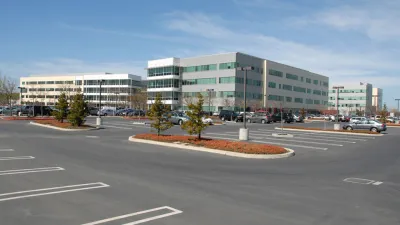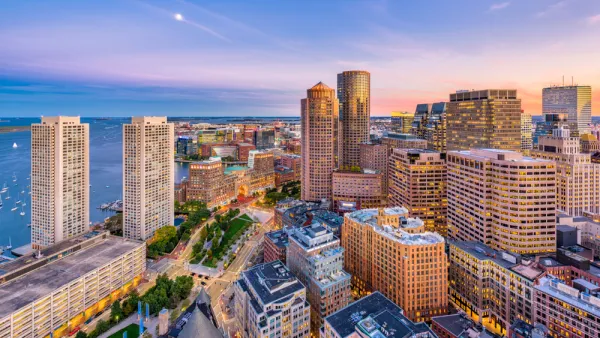With more and more employers downsizing and moving to areas with more urban amenities, large suburban office parks offer an opportunity for increased density and mixed-use development.

Writing in The New York Times, Emily Badger describes the plight of a fading American typology: the suburban office park. “Today suburban office parks have drawn far less attention than downtown offices that are also threatened by remote work. But their decline reflects in some ways a more sweeping and permanent judgment — of once-dominant ideas about where Americans work, how the office should look, and what the suburbs should be.”
According to Badger, “Far from downtowns, there is a different kind of emptiness in suburban settings that were already isolated and lightly populated by design.” While some office parks will likely be modernized and used as offices again, “Other sites will have to become something fundamentally different: schools, senior living centers, apartment complexes, public parks, warehouses.” According to an estimate by commercial real estate firm Jones Lang LaSalle, “57 percent of suburban office space nationwide is so old as to be functionally obsolete.”
However, their massive footprints offer the opportunity for redevelopment with a variety of uses and amenities. “Amid a nationwide housing crisis, many obsolete office parks could be ideal sites for denser housing.” As Badger points out, “Multifamily housing is expensive to build, but the land now being used for suburban parking lots is cheap, so the economics can work out (if the politics do).” To this end, cities and counties must be open to zoning reforms that allow for adaptive reuse of office parks and promote mixed-use development on these sites.
FULL STORY: Lonely Last Days in the Suburban Office Park

National Parks Layoffs Will Cause Communities to Lose Billions
Thousands of essential park workers were laid off this week, just before the busy spring break season.

Retro-silient?: America’s First “Eco-burb,” The Woodlands Turns 50
A master-planned community north of Houston offers lessons on green infrastructure and resilient design, but falls short of its founder’s lofty affordability and walkability goals.

Delivering for America Plan Will Downgrade Mail Service in at Least 49.5 Percent of Zip Codes
Republican and Democrat lawmakers criticize the plan for its disproportionate negative impact on rural communities.

Test News Post 1
This is a summary

Test News Headline 46
Test for the image on the front page.

Balancing Bombs and Butterflies: How the National Guard Protects a Rare Species
The National Guard at Fort Indiantown Gap uses GIS technology and land management strategies to balance military training with conservation efforts, ensuring the survival of the rare eastern regal fritillary butterfly.
Urban Design for Planners 1: Software Tools
This six-course series explores essential urban design concepts using open source software and equips planners with the tools they need to participate fully in the urban design process.
Planning for Universal Design
Learn the tools for implementing Universal Design in planning regulations.
EMC Planning Group, Inc.
Planetizen
Planetizen
Mpact (formerly Rail~Volution)
Great Falls Development Authority, Inc.
HUDs Office of Policy Development and Research
NYU Wagner Graduate School of Public Service





























